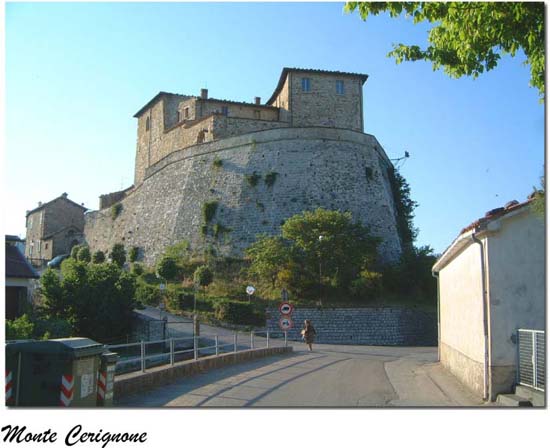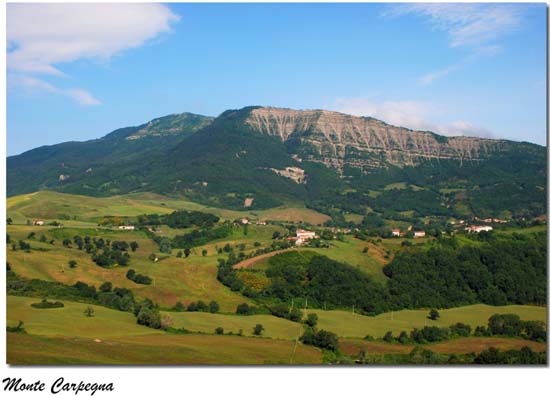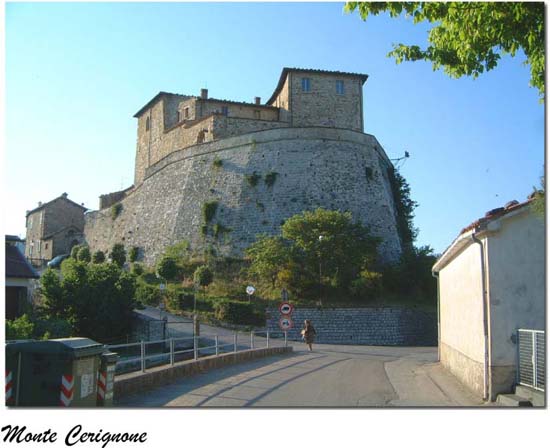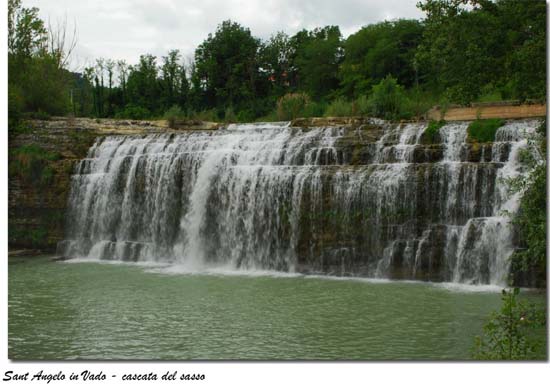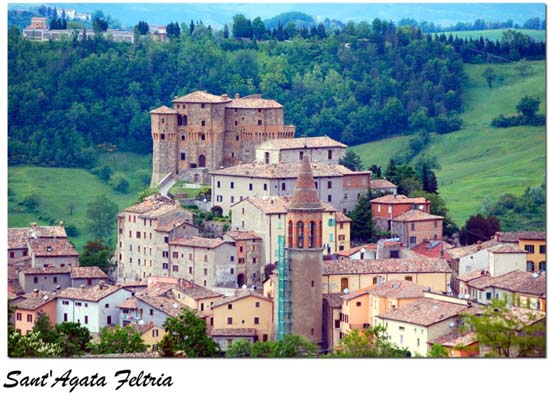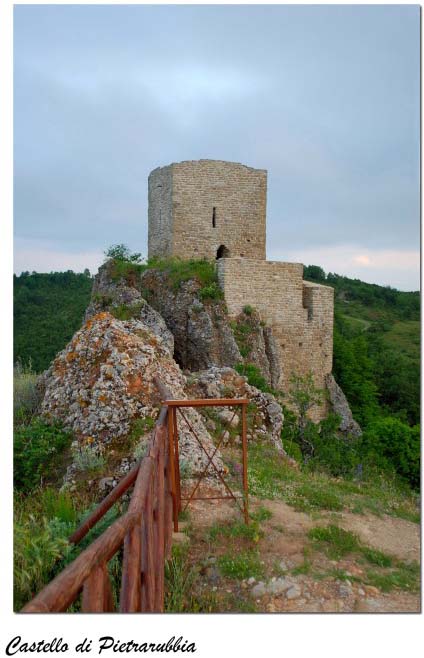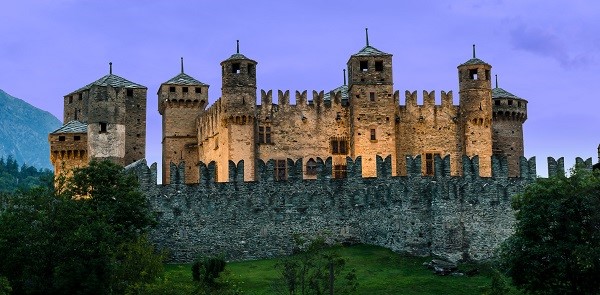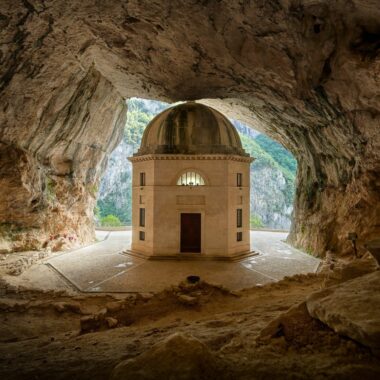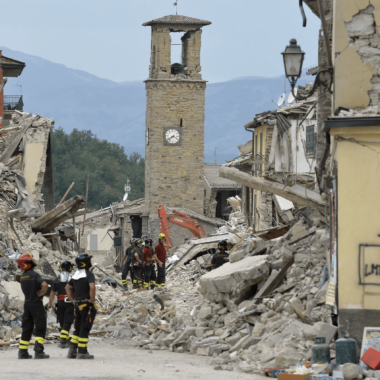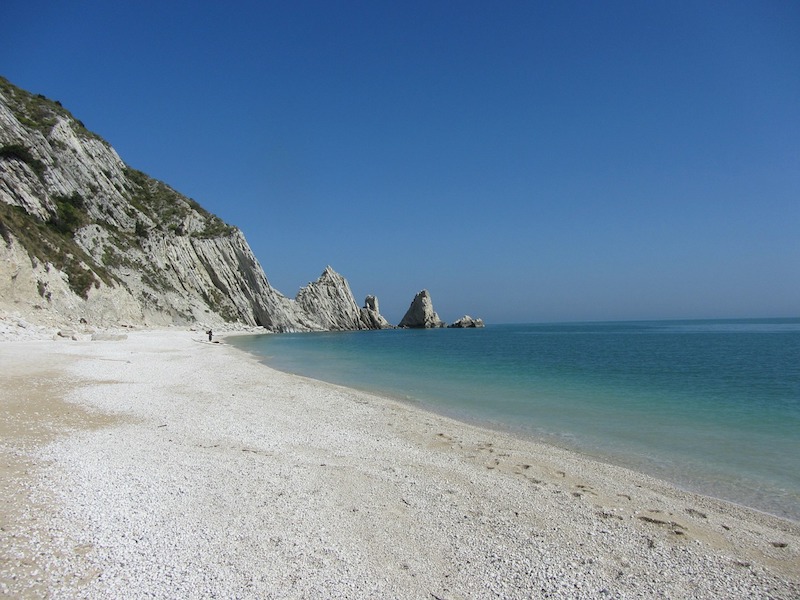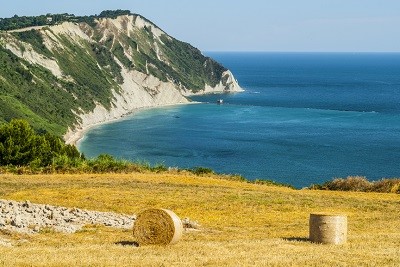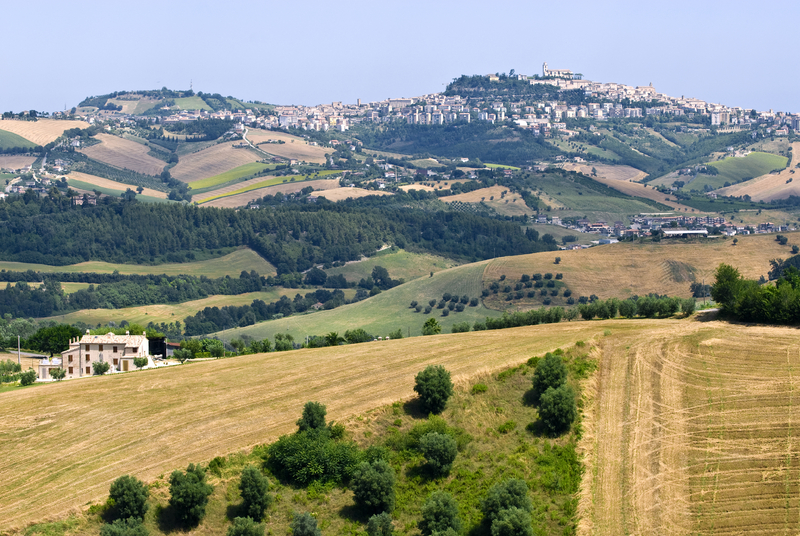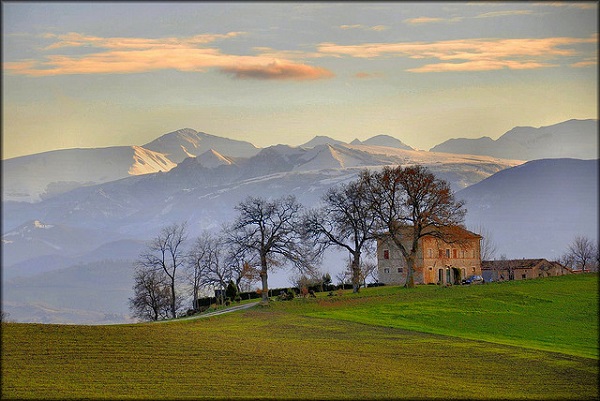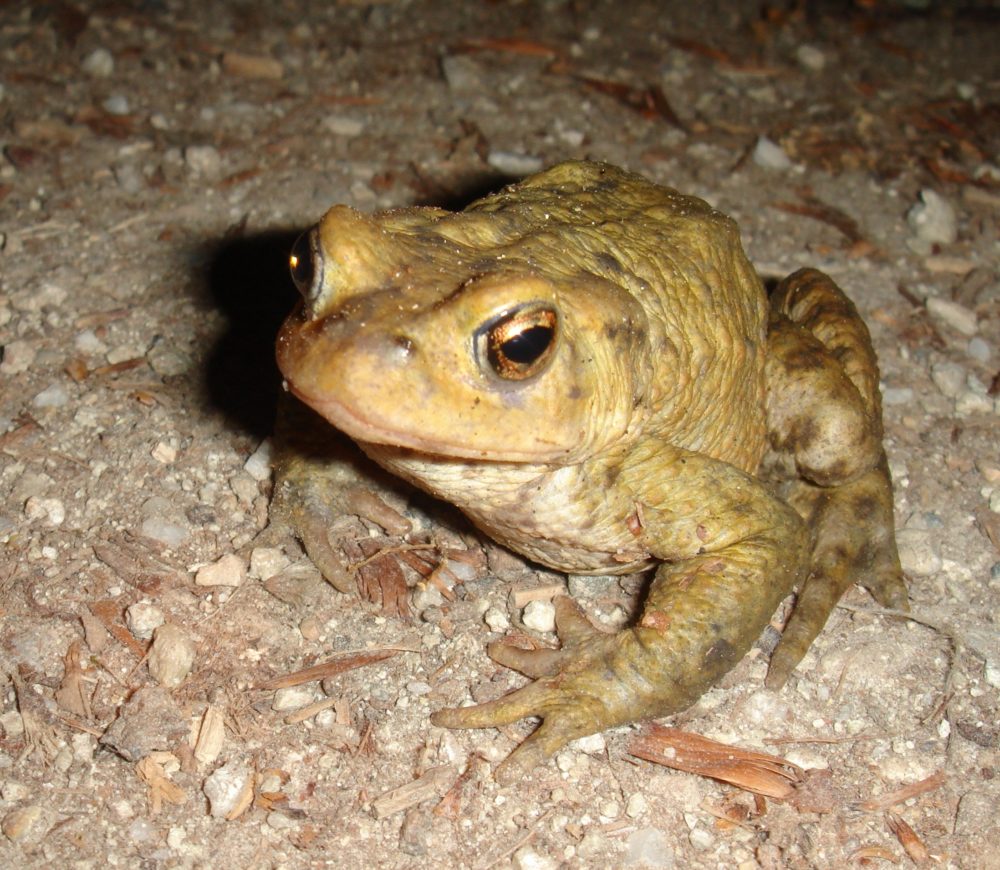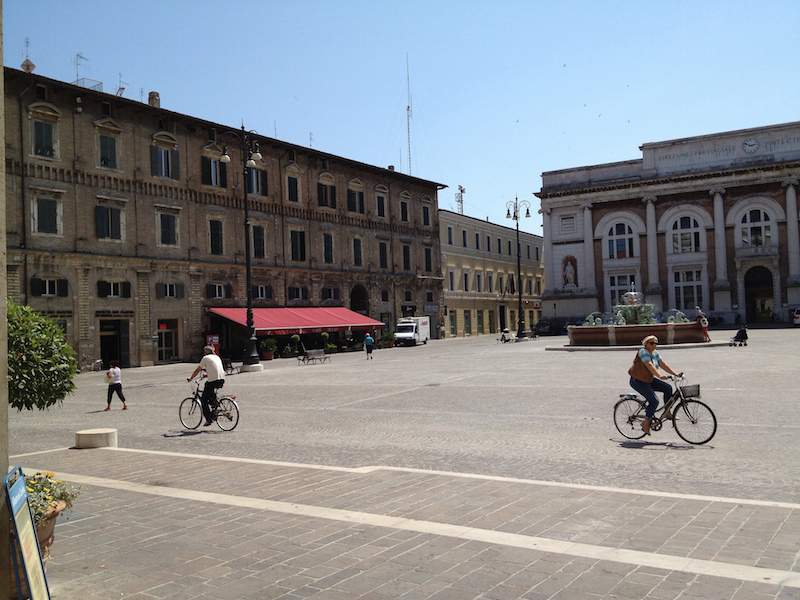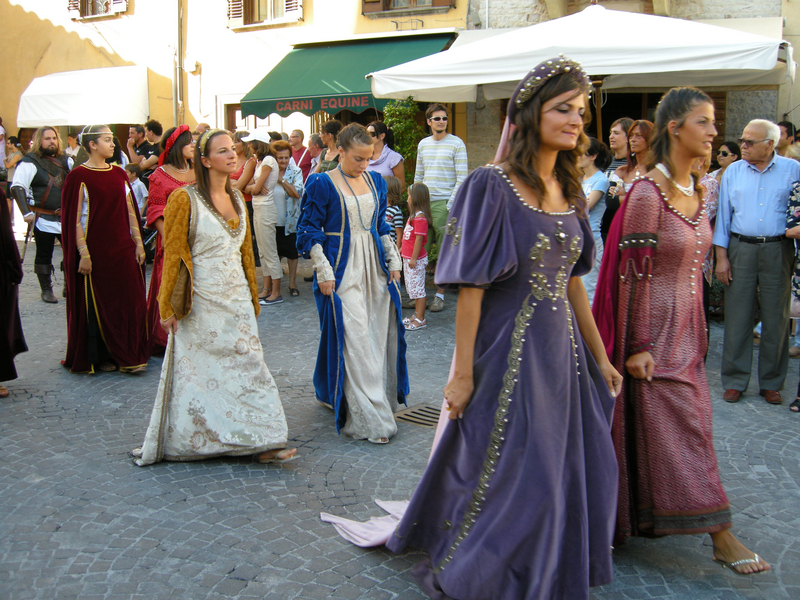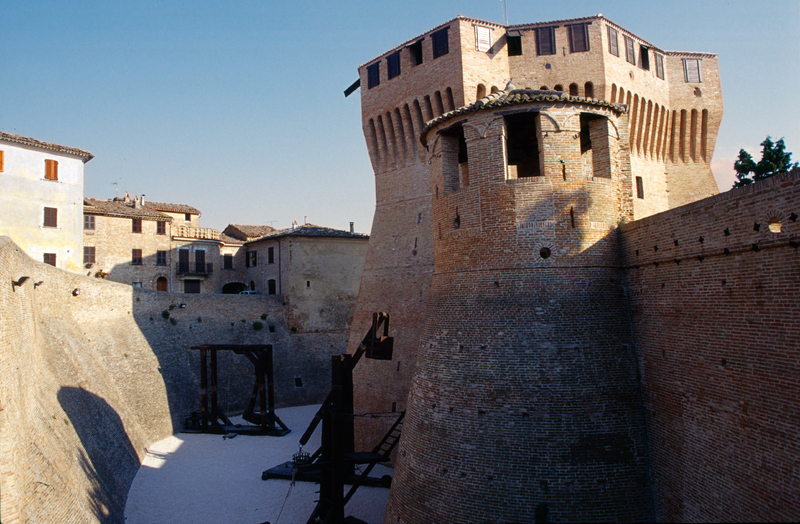Tucked away in a corner of northern Marche and in the Province of Pesaro-Urbino is the territory known as the Montefeltro, Le Marche. In many ways, it is unexpectedly different from other parts of the region. Yet despite its differences, it still maintains the genuine aspects of typical life in the Marche. It is a wild, yet beautiful territory.
Montefeltro, Le Marche is noted, among other things, for its picturesque hilltop towns and villages, green pastures, dense forests of Monte Carpegna, rare flora and fauna, Formaggio di fossa (a cheese that is matured in pits), Visner (a fortified wine made from cherries), chestnuts, pane di Chiaserna (a local bread that is sought after by northern Italians), prosciutto di Carpegna, truffles, numerous castles, and medieval fortifications. It also includes the Riserva del Furlo and Parco Naturale del Sasso Simone e Simoncello.It is one of the most beautiful and yet undiscovered parts of northern Marche.
Montefeltro, Le Marche
The Montefeltro first emerged around 1154 and initially included parts of Romagna, the Marche and San Marino. The territory consisted mainly of two rival and powerful fiefdoms: The Montefeltro of Urbino and the Malatesta of Pesaro. Members of the noble Montefeltro family were noted patrons of the arts who opposed the papacy in the struggle between the Guelfs and the Ghibellines, but perhaps the most famous family member of all was the Lord of Urbino, Federigo da Montefeltro, the one time mercenary general who commanded the Florentine army to defend Florence from invading Venetian forces in 1467. Remnants of this once powerful dynasty are still visible today.
A treasure chest rich in nature, art, history, folklore, and culinary traditions, here you will find, among other gems, the famous and extraordinary Rocca di San Leo, the Teatro Angelo Mariani in Sant’ Agata Féltria (one of the oldest in Italy), The 15th century Rocca Ubaldinesca in Sassocorvaro, the 13th century Convento di Montefiorentino near the village of Frontino, the market town of Pennabilli with its Santuario della Madonna delle Grazie and 11th-century castle remains, Urbino – the masterpiece of Renaissance cities and an important seat of learning, and innumerable pretty towns and villages in their splendid isolation high up in the hills overlooking the valleys. Renaissance Palazzos and Churches with fine works of art can also be found dotted around the countryside whose seasonal colors and mountainous landscape mix together to paint many dazzling scenes.
Montefeltro, Le Marche’s largest natural attraction is the Sasso Simone and Simoncello National Park, particularly noted for its rare orchids, red lilies, and wildlife. The park takes its name from the rocky crags called Simone and Simoncello (Simon and little Simon). The park still reveals traces of an interesting past where you can see the remnants of the odd crumbling wall and paved areas near the summit of Simone, where the Malatesta’s and the Medici’s attempted to build a stronghold in the 15th and 16th centuries respectively. There’s also evidence of a military garrison and a site of a 12th Century Benedictine monastery.
Attractions of Montefeltro
Other attractions include the unusual landscapes in the north. Pietrarubbia where the Counts of Montefeltro once feuded among themselves is where you will find a strange rocky shape punctuating the skyline. At first, it looks like another fortification (in fact you can see the remains of Pietrarubbia castle close by), but upon closer inspection, you will see that this is a rather unusual rock formation, otherwise known as the Torrione di Pietrafagnana
It is also called the Dito del Gigante (the giant’s finger) because it looks like a finger pointing up towards the sky. According to legend, this territory was once the home of a brutal and domineering giant. The Gods attempted to eliminate the giant, but growing ever frustrated by the continual fighting, they eventually threw a bolt of lightning down to earth in a raging fit of anger. This caused the earth to open up and swallow the giant, who desperately attempted to free himself, although he managed to free his finger. Local legend also has it that over time, the giant’s finger was transformed into stone. Moreover, being constantly exposed to the elements, the wind and rain have eroded parts of the Torrione thereby causing a howling noise, which again according to local tradition, is known as the Lamento del Gigante.
Proceeding westbound from Fano along the Via Flaminia you will eventually reach the wild and rocky Passo or Gola del Furlo where the River Candigliano flows through. Apart from the ancient and well-preserved tunnel that was built by Emperor Vespasiano sometime between 76 and 77 AD, here we find an area of stunning natural beauty as well as home to some rare species of wildlife.
More to find out about Montefeltro, Le Marche
There’s also a smaller tunnel that dates back to 217 BC, which carried the Via Flaminia connecting the Adriatic coast with Rome. It was such a strategically important road that numerous battles have been held here, not forgetting that it marks the site where the Romans came to confront the barbarians invading Italy. There are stories of ghostly warriors (soldiers who fought against the Carthaginians centuries earlier) seen fighting alongside the Romans.
In more recent times, the Passo del Furlo was one of Benito Mussolini’s favorite spots whilst en route to Rome. In 1936, members of the local militia together with some local sculptors carved a profile of Mussolini in the rock high up Monte Pietralata overlooking the gorge, but only a small part is now barely discernible from Acqualagna because partisans blew it up after WW2.
The Montefeltro is still relatively undiscovered, although it is becoming increasingly popular among many northern Italians. The territory is off the beaten track, but not completely remote or inaccessible, and that is what makes it so attractive. However, those who visit the Montefeltro do so for the unassuming character of its medieval centers and the quality of the unspoiled countryside. Even Dante, who visited San Leo during his exile from Florence, was so impressed that he mentioned the territory in his epic Divinia Commedia. Today, personalities like Umberto Eco, the Italian literary critic, and novelist who gained international fame with his detective story Il Nome della Rosa (The Name of the Rose) have homes among Raffaello’s unique and famous landscapes and Moto GP Champion, Valentino Rossi, comes from Tavullia near Pesaro.
Infrastructure & Climate
The road infrastructure is well organized and relatively traffic-free in many places. You can reach the Montefeltro, Le Marche from a number of places such as Cesena to the north, Arezzo to the west, Rimini and Pesaro to the east, and Gubbio to the south. Nearest airports are Forli, Rimini and Ancona, or if you are arriving by autostrada (A14 Bologna-Bari) convenient exits are at Cesena, Rimini, Pesaro or Fano.
The climate is generally hot (the heat is not unbearable) from May to September, supporting plenty of outdoor and sporting activities like hiking, rock climbing, cycling, horse riding, and hang gliding. Monte Carpegna provides skiing in winter and for sun worshippers, then the Adriatic coast with its sandy beaches is less than one hour away. Main resorts here include Gabicce Mare, Pesaro and Fano. The tiny Republic of San Marino is also close by.
Many of Italy’s regions have a cuisine that is sophisticated, offering a great variety of dishes that are rich in ingredients and renowned for quality. However, when it comes to the classical and most time-honored culinary traditions, you will find that the cucina povera is simply the best.
Apart from the coastal areas of Northern Marche that offer some great seafood specialties such as brodetto for example, the essential characteristics of Montefeltro cooking are mainly based on their roots in the country or cucina di terra.
Regional Cuisine
Culinary traditions in the Montefeltro are as diverse as its people, who pay strict attention to the quality of their local products as well as their recipes. Whereas meat dishes dominate the inland areas (these include beef, lamb, goat, poultry, pheasant, duck, rabbit, pork, and wild boar), you will also find that some areas combine rural flavours with the fresher flavours of the Adriatic. Not surprisingly, the territory combines the cultures of both the mountains and the sea. Picture also some of the finest fresh, seasonal ingredients, homemade pasta, cheeses, truffles, and bread (Pane di Maiolo, Pane di Chiaserna, La Crescia – like Piadina Romagnola and Pizza Spianata) and you have all the right elements for creating an excellent and healthy eating experience.
If you appreciate good, wholesome food, you will discover many gastronomic treasures in Montefeltro, Le Marche. The Valmarecchia (here we find Casteldelci, Sant’ Agata Feltria, Pennabilli, Talamello, and San Leo) is predominately cheese, mushroom, and truffle country. Cheese production is based on ancient traditions and the most well known include caciotta, formaggio di fossa, ravaggio, pecorino and slattato. October is an important time for truffles.
There are 9 varieties of truffle:
Bianco pregiato
Nero pregiato
Bianchetto
Nero d’inverno
Moscato
Nero d’estate
Ucinato
Nero ordinario
Nero liscio
Each variety has its own distinctive characteristics. Sant’ Agata Feltria, Sant Angelo in Vado and Acqualagna are also well known Montefeltro truffle hot spots. Other delicacies produced in the area includeprosciutto and salame. You should try the salamino del fumaiolo, salamino di cinghiale and salsicce al tartufo. The Fiera Nazionale del Tartufo Bianco Pregiato is held in Sant’ Agata Feltria every Sunday during October and is well worth a visit.
Head towards the heart of the Montefeltro passing through Carpegna (Carpegna is famous for its ham: prosciutto di Carpegna DOP) and the Parco Nazionale Simone Simoncello and down towards Urbino. Here the flavours of the mountains come to the fore. Delicious soups, broths and pasta dishes such as cappeletti and maltagliati con ceci, tagliatelle, ravioli and gnocchi with funghi or tartufo, passarelli in brodo, polenta with faggioli and ragù di cacciagione
To uncover the best meat dishes than a visit to the Il Piacere della Carne, an event held in the Montefeltro during weekends throughout March each year is a must. Here you will get to sample the very best Carne Marchigiana that the region has to offer, which include tagliata (strips of steak) with aromatic herbs, ossobuco (braised veal knuckle) with peas, spezzatino (stewed beef) with porcini mushrooms, and stufato (beef braised in wine) with fresh seasonal vegetables. Most villages and towns host weekly markets where you can buy fresh produce and if you are into cooking, then these markets are not only a great place to visit, they are an invaluable source for buying fresh food at more competitive prices.
The Marche region also produces a large range of wines; including 13 varieties of DOC-designated wines. The most important in the Montefeltro are Sangiovese dei Colli Pesaresi DOC (a refreshing red) and Bianchello del Metauro DOC (a dry white). Other specialties include Visner (a cherry wine) and Santangiolino (a sweet, fortified wine rather like Vin Santo).
According to a popular Montefeltro, Le Marche saying: “campa cavallo che l’ erba cresce” (Horse, don’t give up hope, the grass will soon grow again). At first sight, the landscape is remarkably rocky. You cannot fail to notice San Leo and Maioletto perched high on their steep, rocky crags for example. The many ancient strongholds you see scattered throughout the territory were built to provide protection against expected invasion. They were also used as palaces for the Feudal Lords, symbolic of the power that each fiefdom displayed during these turbulent times. With plenty of verdant countrysides, you won’t have to worry about the grass. Say what you like about it, the more you explore the Montefeltro the more you will experience a land of great historical, cultural, and gastronomic riches as well as a land of rare natural beauty.
More to find around Montefeltro, Le Marche
1) Sant’ Agata Feltria – Rocca Fregoso, Teatro Angelo Mariani and production of Formaggio di Fossa (fossa being the pits in which the cheese is matured)
2) Pennabili – Castle and tower of Maciano, Sanctuary of the abandoned Madonna’s, lake Andreuccio
3) San Leo – Rocca di San Leo
4) Parco Nazionale Simone e Simoncello
5) Unusual rock formations at Pietrarubbia (The Giant’s Finger)
6) Sassocorvaro – Rocca Ubaldinasca, Museum of rural life
7) Gradara – Rocca di Gradara
8) Urbino – The Ducal Palace, spiral staircase, Marche National Art Gallery, Raffaello’s birthplace and the botanical gardens.
9) Gola del Furlo
10) Urbania – Ducal Palace and Museo Civico, which contains Mercator’s globe
11) Piobbico – Brancaleone Castle, woolen carpet weaving, and the Brancaleoni Palaeontology-Natural History museum. The area surrounding Piobbico provides trekking, horse riding, canoeing, and nature trails.
Where to stay:
Il Vicariato, Pietrarubbia
Vicariato is an ancient hamlet situated at the foot of the Montefeltro’s most ancient castle. Here you can relax amidst the verdant countryside with stunning views of Monte Carpegna and enjoy the culinary surprises that are so distinctive to this region.
By Charles L Joseph

